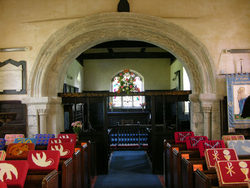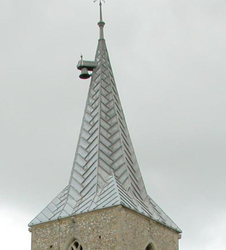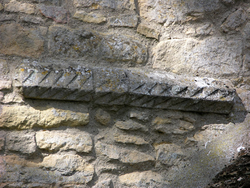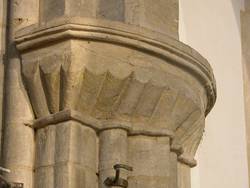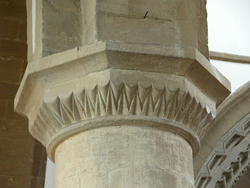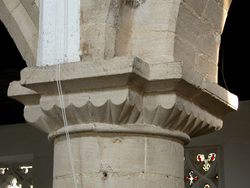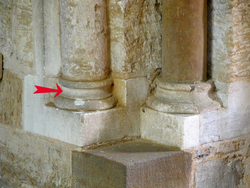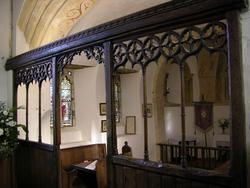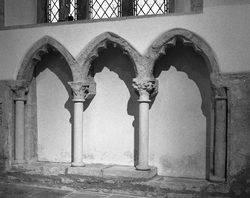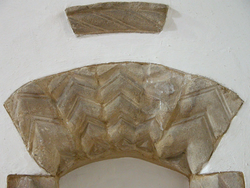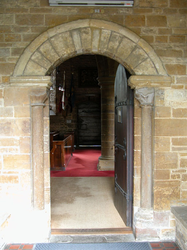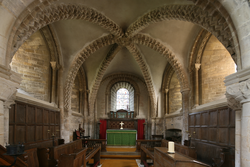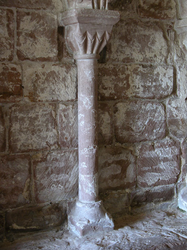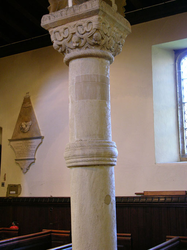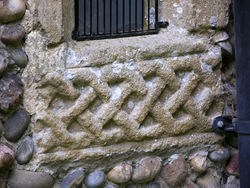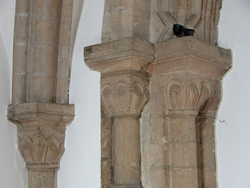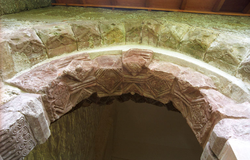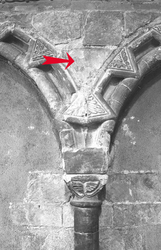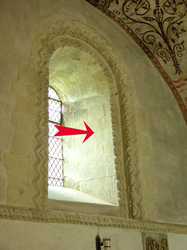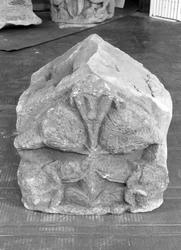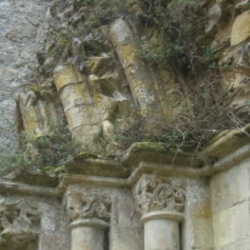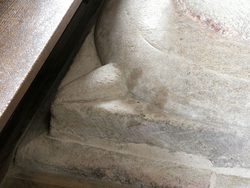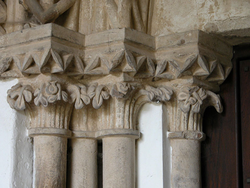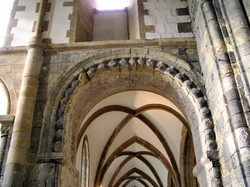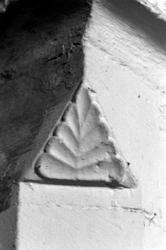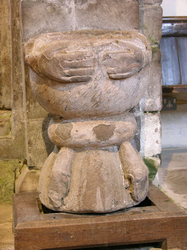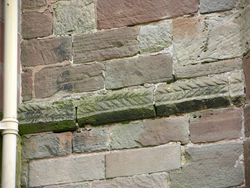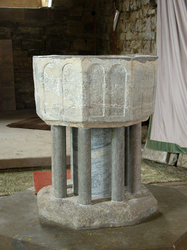
The Corpus of ROMANESQUE SCULPTURE in Britain & Ireland

Glossary
A strong room usually attached to the N side of the chancel where vestments and the utensils belonging to the altars were placed. It is synonymous with vestry

The area immediately around the main altar of a church.

A small bell rung during the mass, at the consecration of the host. It could simply be a handbell, but sometimes a small bell in the bell-chamber was used, and provision was made in the form of an opening to allow the ringer in the tower to see the sanctuary. In other cases the sanctus bell was mounted externally; outside the tower (as at Ickleton, Cambs) or in a bellcote on the east gable of the nave (as at Wingrave, Bucks). Bells in the tower or external bells could be heard by those not in church, and alerted them that a crucial stage in the mass had been reached.

An enrichment in the form of a band of raised triangles.

A development of the cushion capital, where the shields and cones are multiplied to form double scallop, triple scallop or multi scallop capitals. Scallop capitals are susceptible to a large number of variations, of which the commonest include recessing the shields, or defining them with a groove; sheathing the cones, and carving wedges, fillets or rolls between the cones. See also: slipped scallop capital.

Sheathed cone ariant of the scallop capital form (see above)

Scallop capital variant form (see above)

A structure of wood, stone or metal dividing the clerical and lay areas of a church. See rood screen, pulpitum, parclose screen

Seats for the clergy, generally on the S side of the chancel.

Part of a circle smaller than a semicircle.

An arch composed of a single segment, which is less than a semicircle.
A quadrupartite vault with an additional transverse rib passing through the point of intersection, i.e. composed of six separate surfaces.

The trunk of a column between the base and capital.

A ring around a circular pier or shaft.

The lower horizontal part of a window or door frame.

A development of the scallop capital where the cones appears to slip down the capital, leaving cusps where the shields would normally be.
 The underside of an arch or lintel.
The underside of an arch or lintel.

The triangular area between adjacent arches.

Angled reveal, a chamfered surface cut into the walls. The term usually refers to the widening of doorways, windows or other wall openings by slanting the jambs.

The first stone of an arch or vaulting rib above the springing point. A double springer is a gabled stone from which spring two adjoining arches.

The level at which an arch or vault rises from its supports.

An ornament seen on pier bases, running from the moulding of the base onto the angle of the square plinth. It is sometimes carved with foliage, animal or human heads, etc.

Fleshy leaf with a trefoil termination, extremely popular in England at the end of the 12thc and the beginning of the 13thc. It is often applied to capitals.

An arch with its springing line raised by vertical sections above the impost level.
The termination of a chamfer bringing the edge of a pared off stone back to a right angle. It may be a simple triangular plane, but is often ornamented with a pyramid or a scroll. The example is from the tower arch at Bisham.

Holy water basin at the entrance to a church, usually on a pillar or set in a niche.

An horizontal course projecting from a wall, often moulded and at times richly carved.

Like Purbeck marble, a hard fossiliferous limestone capable of taking a high polish. It differs from Purbeck in having bigger fossils. Also known as Large Paludina Limestone, Petworth Marble, Bethersden Marble or Laughton Stone.

